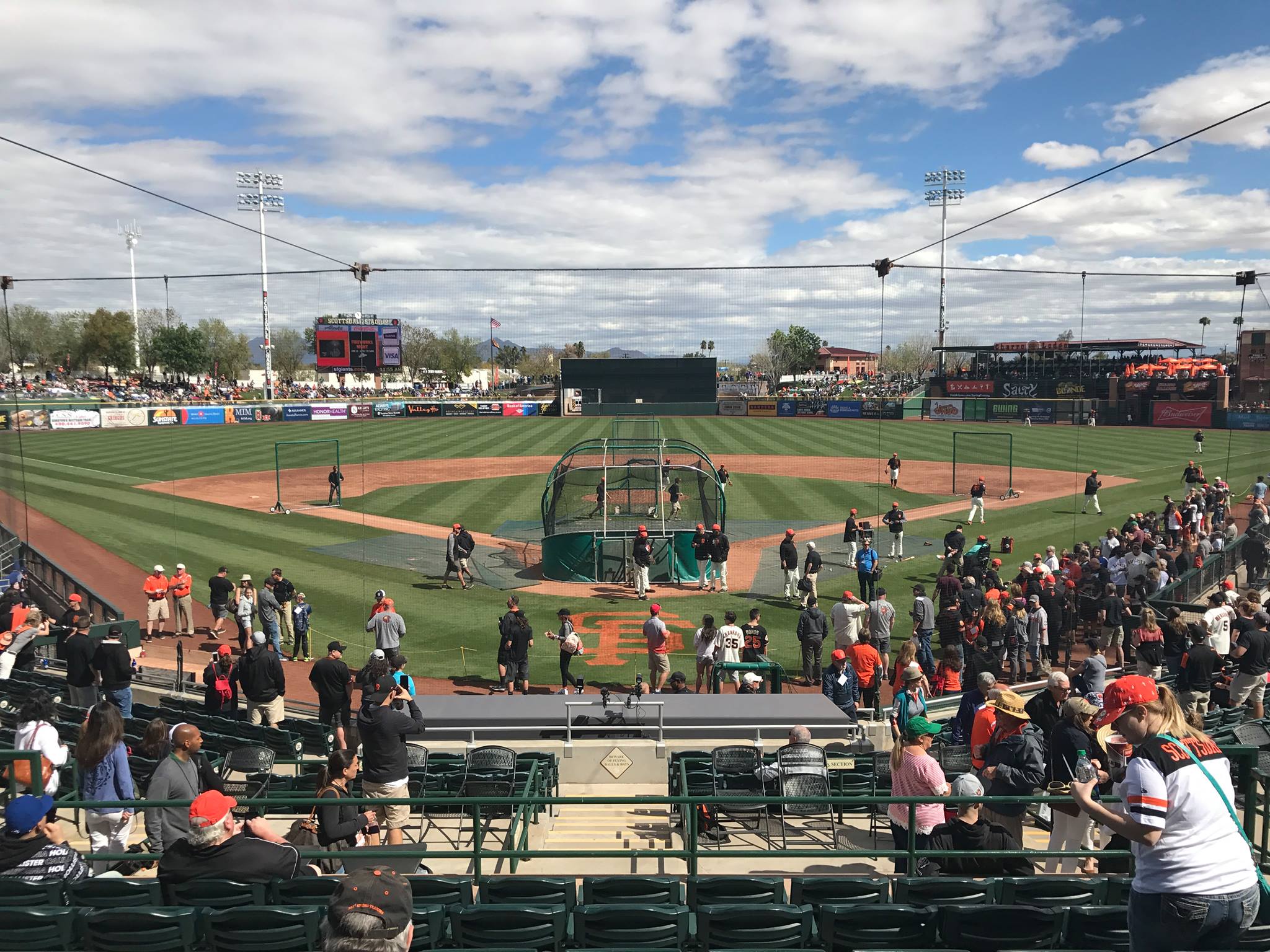
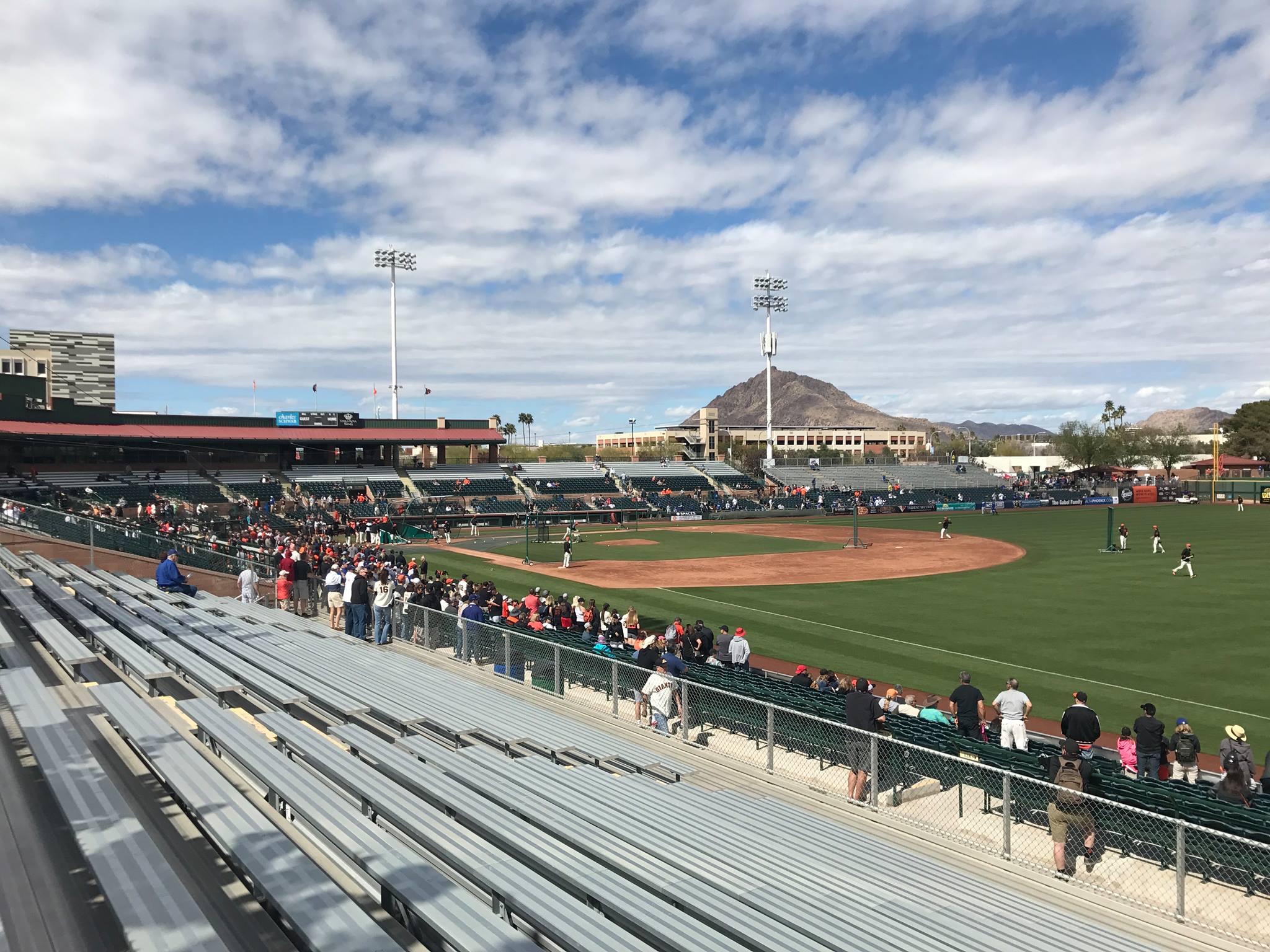
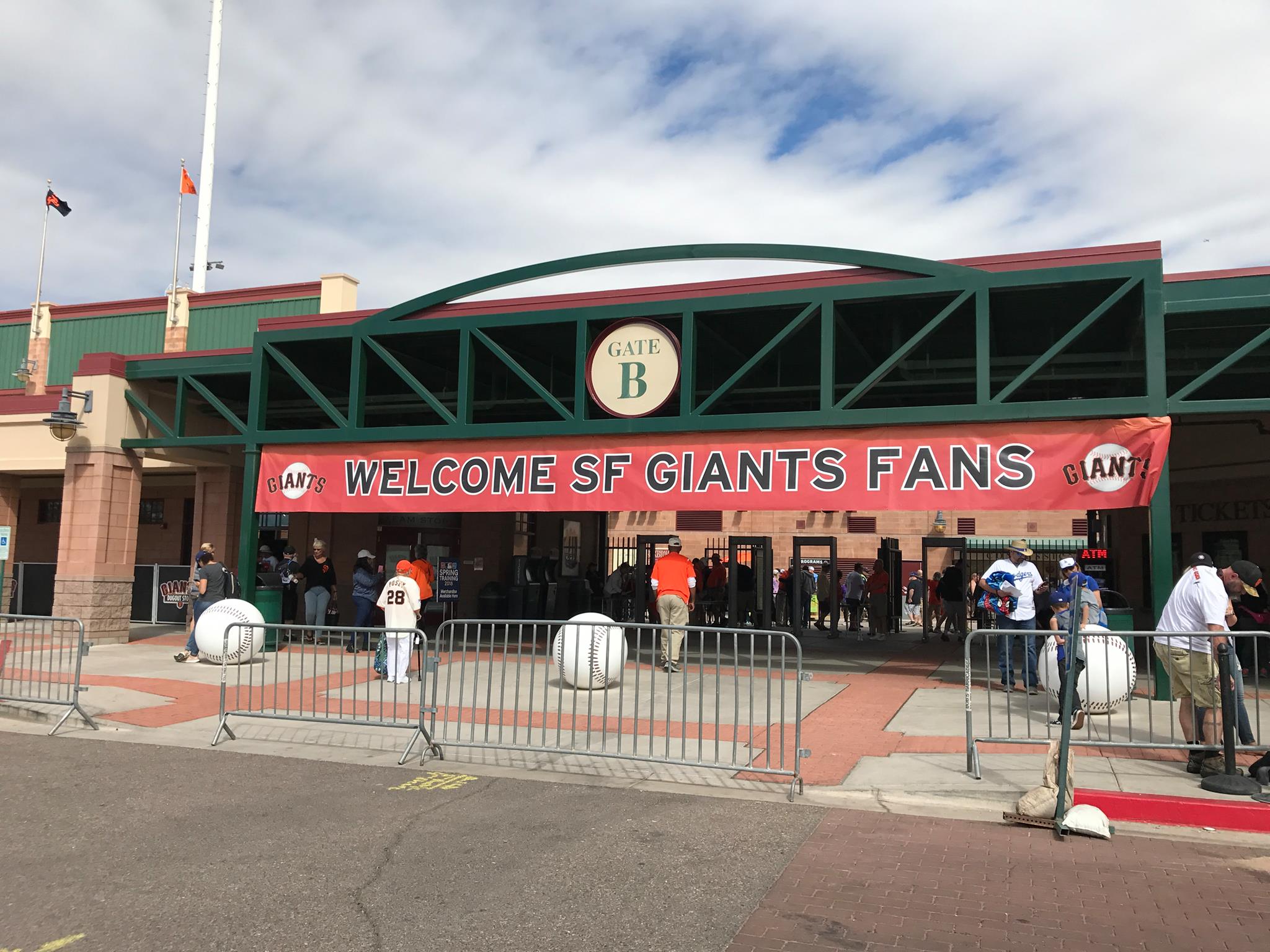
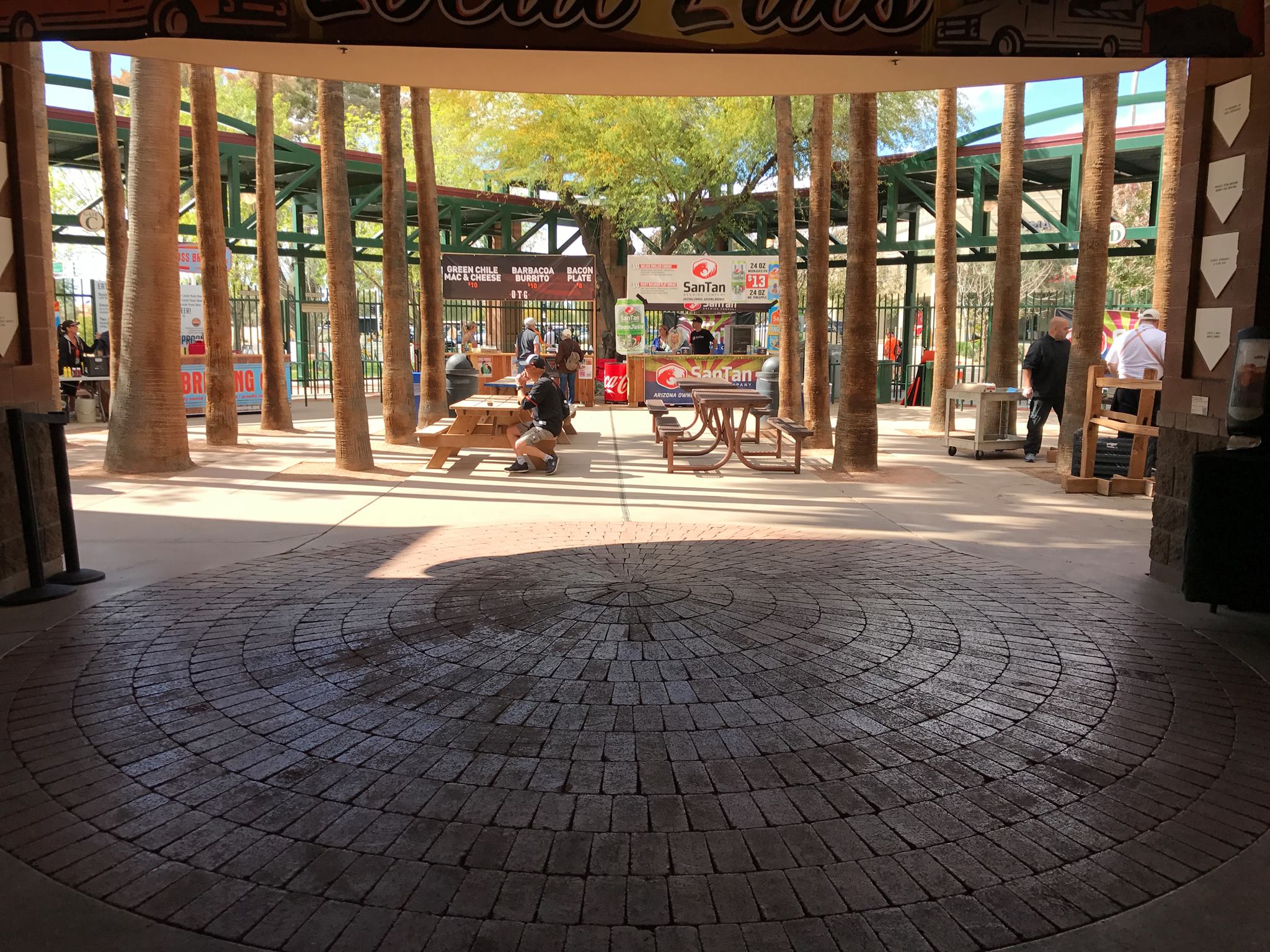
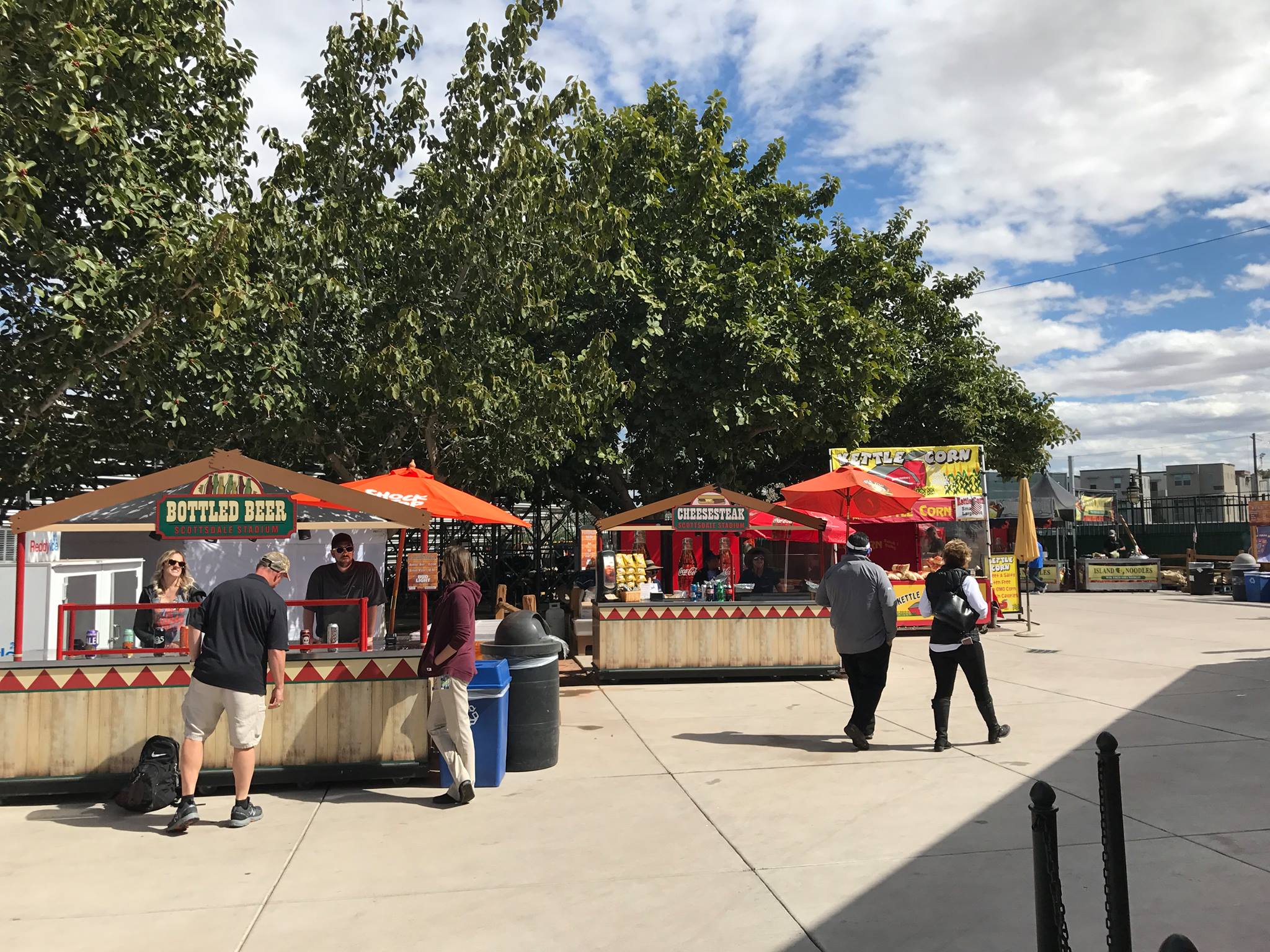
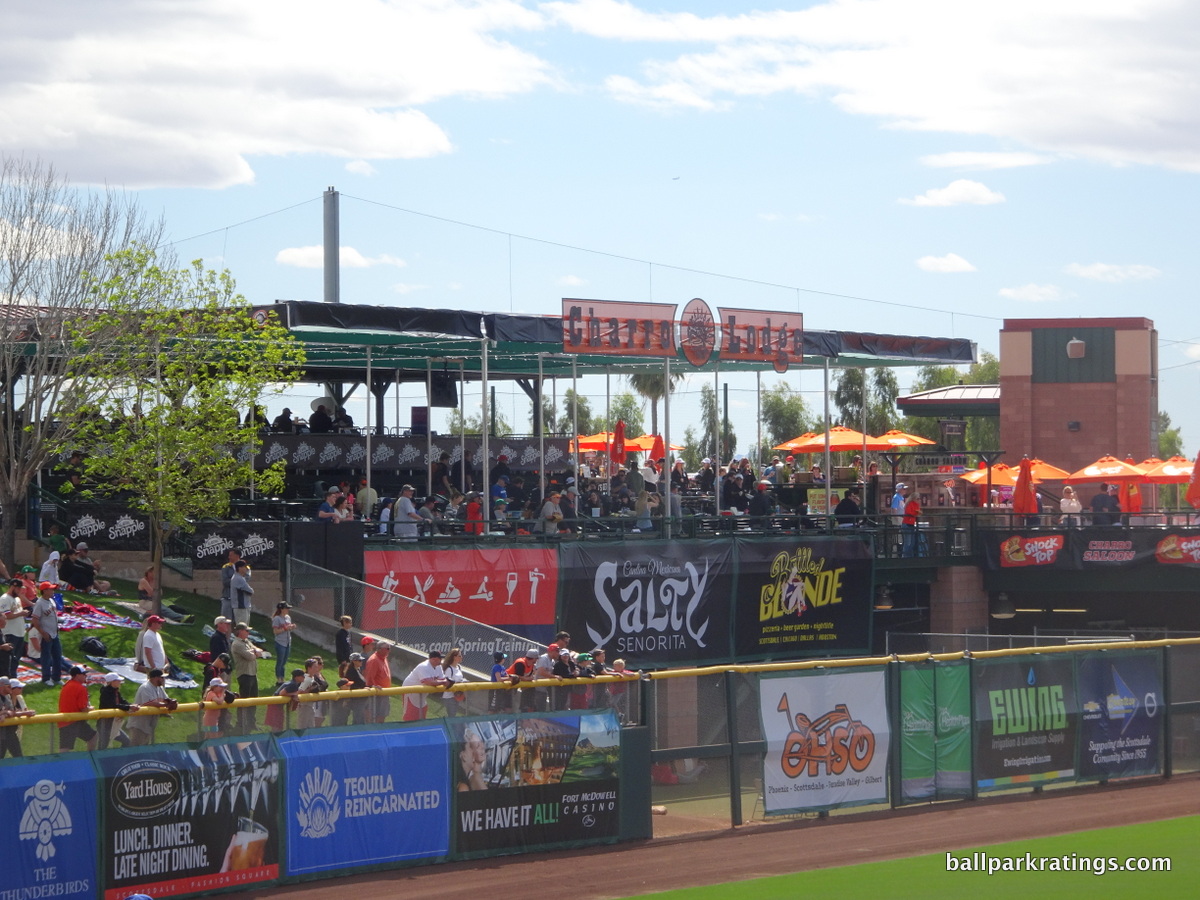
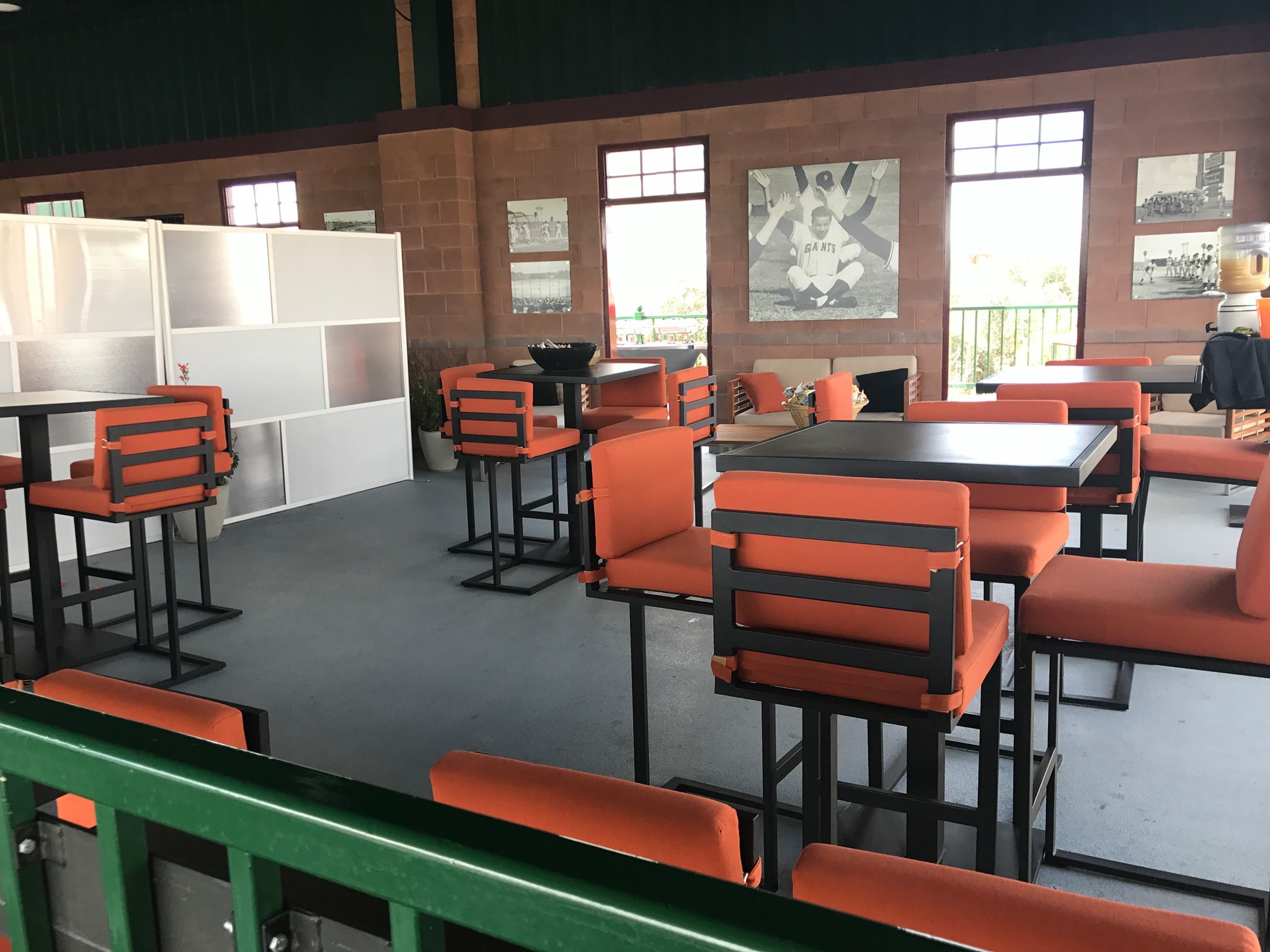
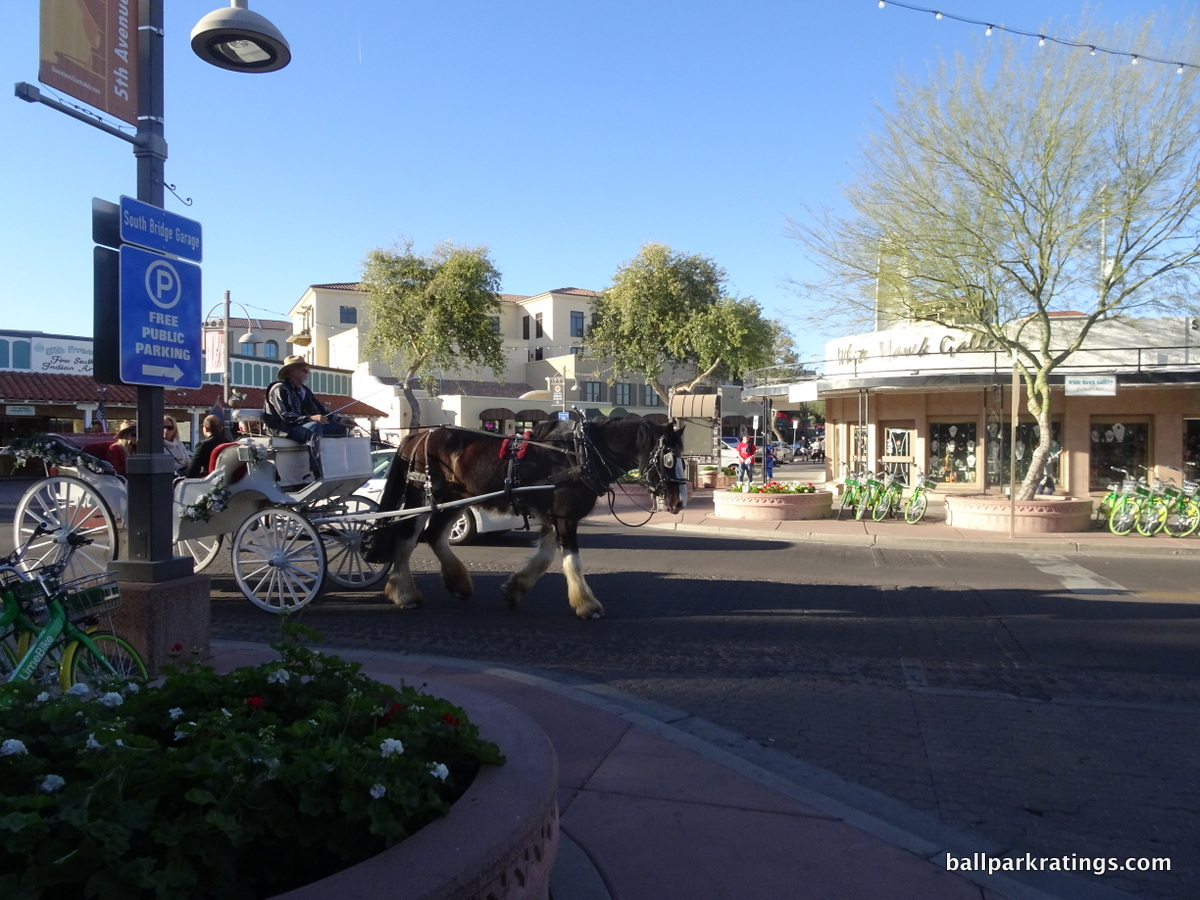
Scottsdale Stadium
| Setting | 10/10 | 2 Thumbs Up | Location/Access | 10/10 | 2 Thumbs Up |
|---|
| Architecture & Aesthetics | 21/28 | 1 Thumb Up |
|---|---|---|
| Exterior Design/Aesthetics | 6.5/10 | 1 Thumb Up |
| Interior Aesthetics/Visuals | 12/15 | 1 Thumb Up |
| Concourse Aesthetics | 2.5/3 | 1 Thumb Up |
| Functionality & Essentials | 16.5/25 | 1 Thumb Down |
|---|---|---|
| Sightlines | 7/10 | Thumb Sideways |
| Seat Comfort | 2/5 | 1 Thumb Down |
| Concourse Functionality | 4.5/7 | Thumb Sideways |
| Scoreboards/Tech | 3/3 | 1 Thumb Up |
| Amenities & Features | 13/20 | Thumb Sideways |
|---|---|---|
| Concessions | 8.5/10 | 1 Thumb Up |
| Premium/Group Seating | 2/4 | Thumb Sideways |
| Social Spaces | 1.5/4 | 1 Thumb Down |
| Kids Areas | 1/2 | Thumb Sideways |
| Atmosphere, Vibe, & Policies | 15.5/17 | 1 Thumb Up |
|---|---|---|
| Ballpark Personality | 9/10 | 1 Thumb Up |
| Fan Support | 5/5 | 2 Thumbs Up |
| Ballpark Policies/Staff | 1.5/2 | 1 Thumb Up |
| Bonus | 8 |
|---|---|
| Final Score | 84 |
|---|---|
| Ranking | AZ: #7/10; Overall: #17/23 |
|---|---|
By: Cole Shoemaker
While I called Peoria Sports Complex the “Camden Yards of the Cactus League” for, among other reasons, spawning a new generation of mega-parks shared by two teams, being the first to possess fan-friendly amenities like 360-degree concourses, and having a much higher price tag than ever seen before, perhaps that designation would be better bestowed on Scottsdale Stadium.
With only 8 clubs all training in woefully inadequate facilities prior to 1992, Scottsdale Stadium was the first modern venue in Arizona spring training. Built to be the best in the entire state at the time, Scottsdale set the new standard as the first Cactus League park with a capacity above 10,000 and attractive aesthetics.
You often hear the words “charm” and “old school” associated with Scottsdale, partially because the site dates back to 1955, but mostly because of its relationship to the Old Scottsdale neighborhood. Like the classic ballparks, Scottsdale Stadium is interwoven with the area, in contrast to the sprawling complexes across spring training.
Often considered the best ballpark in the Cactus League during the late 2000s after its 2006 renovation, the park is probably a bit overrated today, as its functionality and amenities have fallen behind the times. I actually even downgraded Scottsdale Stadium a bit this year, but with its respectable aesthetics, vibrant atmosphere, and charming setting, Scottsdale Stadium remains a prime spring training destination.
Scottsdale Stadium’s location in a prime tourist destination with an active local scene is somewhat of an outlier in spring training, the only park to score a perfect “10.”
The revitalized Old Scottsdale is replete with old fashion shops, festive bars, high-quality restaurants, nightclubs, a world-class art scene, and other attractions. Other surrounding destinations include the high-end Scottsdale Fashion Square, one of the best shopping complexes in America. Plenty of great resorts and golfing in the area. While parking is the only negative, Scottsdale Stadium’s superb location and local scene are its enduring assets. The larger setting rivals that of MLB parks.

While it doesn’t reach the high standards of today, Scottsdale Stadium was the first in the Cactus League to have any architectural and aesthetic impulses. Fitted with sand brick, dark green panels, and hues of rustic red infused with local accents, the exterior façade is vaguely southwestern but unmistakably attractive and intimate. The outside scene sometimes lacks presence, often defying efforts to get a signature shot, but it gets an extra boost for fitting in with its surroundings and being ahead of its time.
That southwestern sensibility is further incorporated on the inside through the awning above the press box. Interior aesthetic highlights include picturesque views of the Camelback and McDowell Mountains and the greenery beyond the left field berm. The concourse aesthetics can be attractive here by virtue of the palm tree court behind home plate.
It’s hard to put your finger on, but Scottsdale Stadium is quite distinctive, often exuding personality at every corner. Memorable features include the palm tree court, the practice field literally integrated onto the concourse in the right field corner, and the especially festive Charro Lodge. Most of all, the park just sticks out because of its location.
There should be more references to the San Francisco Giants throughout the park, as this is a high score in “ballpark personality” given that the park fails on that accord. The only noteworthy historical feature is some plaques on the main concourse. But I’m forgiving because (a) this park still feels like San Francisco’s home due to excellent fan support, and (b) there are features that otherwise help this place stand out.
Scottsdale Stadium is lacking in most aspects that can be objectively quantified, however. With its outdated seating, sightline issues, and relatively cramped footprint, Scottsdale Stadium scores poorly in functionality, only above the last place ballpark in Tempe (Angels).
Many spring parks have some less than ideal sightlines in the corners, where the seats could be better oriented toward the infield. It’s an even more glaring problem in Scottsdale, as the four sections down each line aren’t even slightly pointed toward the action. You’ll be unambiguously facing center field.
The seats themselves are even more problematic, as Scottsdale Stadium is the only park left in spring training with large sections of bleachers in each infield grandstand section. The lower level fold-down seats are aging and lack cup holders. Overall, Scottsdale Stadium scores worst in all of spring training in seat comfort.
Scottsdale Stadium technically sports a 360-degree concourse by virtue of the bridge added in 2006 beyond center field, but it often doesn’t feel like it. The space beyond left field is confined to a narrow walkway behind the berm, and the wraparound system is littered with horizontal and vertical maze-like discontinuities. The main concourse can sometimes get narrow and is closed from the field. The only notable standing room option is the small grassy area by the right field foul pole. On the plus side, the Giants added a new videoboard in recent years.

Scottsdale Stadium has below-average amenities, but there are some bright spots, including an improved selection and quality of concessions. Along with BBQ, street tacos, and Island Noodles, the highlight of the culinary experience is the food court behind home plate, which serves deluxe grilled cheese, flatbreads, mac and cheese, Barbacoa, bacon, and delicious green chili pork sliders.
The park generally does a poor job of providing social spaces and sitting areas accessible to all fans. There are a number of picnic tables dispersed throughout the concourse, including a random patio area down the left field line. That’s better than Surprise, though. No destination social bar here, either.
Scottsdale Stadium doesn’t have the quantity of premium areas, distinctive seating options, or group spaces of other parks, but there’s one big bright spot. The Charro Lodge located beyond left field is arguably the best party deck in spring training. It’s certainly the most well-known. The extent of the kids’ features are various throwing games.
What Scottsdale Stadium lacks in amenities and functionality, it makes up in charm and character, something that is really in short supply in the Cactus League with the new modern cookie cutters.
Further renovations could propel it to state-of-the-art status as well.